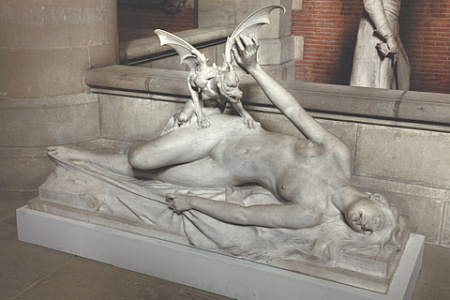
A compelling new work, “The Vampire: A Natural History of Resurrection” by Francesco Paolo De Ceglia, slated for release by NLO Publishing in early October, promises a brilliant and ironic exploration into the 18th-century scientific, medical, and philosophical debates surrounding belief in the reanimated dead. This historical dive is far more than a mere recounting of folklore; it’s a profound commentary on humanity’s enduring fear of death, and its intricate connections to politics, religion, and the very boundaries of human knowledge and perception, themes with universal resonance across societies.
Historically, the onset of twilight has invariably stirred the primal anxieties of the human psyche. Darkness, a canvas for unchecked imagination, has always held a terrifying allure. The text suggests that from the late Middle Ages, coinciding with a surge in daytime activity and confidence, there was a discernible ‘nocturnization’ of fear, leading to an intensification of nyctophobia. While previously malevolent forces required no specific time to enact their evils, the increasing human dominance and social security during daylight hours seemingly compelled these sinister entities to confine their operations exclusively to the cloak of night. This ‘demonization of night,’ a perpetual theme in religious and cultural narratives, thus represented a symbolic price paid for the liberation and safety of the day, profoundly shaping Western cultural perceptions.
However, this nocturnal confinement of evil was not universally observed. In regions east of Austria, for instance, resurrected corpses and other malevolent figures were believed to manifest even in broad daylight. Ancient Greece, in particular, maintained a vivid memory of ‘midday demons’ or ‘demons of the meridian’ from its archaic periods, where daylight appearances of malevolent entities were central to their epiphanies. This enduring contrast highlights a fascinating divergence in cultural interpretations of fear and evil across the European continent, influencing narratives from ancient myths to modern cinematic horror, as evidenced by a later reference in The Exorcist (1973).
Regardless of their preferred hour, the specter of death loomed large, always at the core of these terrors. While Western chroniclers often favored nocturnal settings for tales of the returned dead, empowering darkness to unleash its secret forces, the omnipresence of death was a stark reality for earlier generations. As Christian historian Alec Ryrie observes, “sleep in the early modern period was a hazardous business.” The familiar prayer, “If I should die before I wake,” was a stark reminder of a time when death often arrived unexpectedly in the night—from illness, accidents, fires, violence, or simply the cold. This constant proximity to mortality fueled a pervasive dread, personified by the chilling sensation of a cold breath, signaling the near presence of the “Black Lady,” the ultimate arbiter of all fears.
Across diverse cultures, the nocturnal tormentor took on various guises, yet the “Black Lady” herself presided universally. The English ‘nightmare,’ for instance, derives from ‘maere,’ an evil spirit that mounted sleepers, immobilizing them like horses. Similarly, the French ‘cauchemare’ originates from the Dutch ‘mare,’ another dark entity that invaded bedrooms to oppress individuals, preventing them from breathing. These figures are evolutionary manifestations of a singular dark force—associated with suffering and illness—known in Germanic languages since at least the 9th century as ‘Mahr.’ Linguists trace this to the Indo-European root ‘mer,’ which eventually evolved to express the concept of death, as seen in the Latin ‘mors,’ underscoring a deep, shared linguistic and conceptual heritage across vast geographic regions.
This phenomenon also found its counterpart in Slavic languages, where it is known as ‘mara’ or ‘mora.’ Hungarian researcher Éva Pócs identifies ‘mara’ as a destructive, sudden energy that induces anxiety and oppression, capable of shapeshifting into human or animal forms. This logic reflects a primal human instinct: who, facing a furious beast, wouldn’t suspect a conscious, malicious, dark force lurking beneath its guise? Legends depict ‘mara’ as wolves, dogs, cats, pigs, chickens—essentially all known animals of the time. Particularly prevalent in Balkan folklore was the belief that ‘mara’ often appeared as a butterfly. This seemingly innocuous winged insect, a symbol of the soul’s free movement and metamorphosis in ancient Greek thought, capable of defying gravity and escaping the body, held a terrifying symbolic weight.
While today the butterfly evokes images of lightness and poetry, in earlier eras, particularly startling variations like the Death’s-head hawkmoth, could inspire sheer terror. Such insects were seen as shapeshifters, conceptually akin to bats in European culture and literature. This transformation of a seemingly innocent creature into an object of dread illustrates how cultural context and evolving perceptions can drastically alter the symbolism of shared natural phenomena, akin to pinning a butterfly under glass, preserving its form but stripping it of its inherent vivacity and mystique. It forms a kind of macabre, diabolical entomological collection of fears.
These dark apparitions, though often manifesting in torturous dreams, were sometimes reported even in daylight. The ‘mara’ traditionally plunged its victims into states of profound disquiet. Yet, a cyclical pattern, mirroring the alternation of darkness and light, governed its appearances. The ‘mara’ was notably more active during the cold, dark times of the year. Linguistically, its name is connected to winter goddesses across Slavic cultures: Marzanna (Polish), Marena (Russian), Mara (Ukrainian), Morana (Czech, Slovene, Serbian, Croatian), Morena (Slovak, Macedonian), or Mora (Bulgarian). The enduring custom of burning effigies of this deity in early spring, then casting them, still smoldering or reduced to ash, into water—often a stream or pond—underscores a deep-seated belief system. It suggests that sleep, illusion, death, malaise, and winter are all offspring of a single, despotic lineage, or even manifestations of the same powerful force. Indeed, the words ‘night’ and ‘winter’ were once near synonyms; a terrifying ‘night’ story was invariably also a ‘winter’ one. This rich tapestry of shared fears, linguistic origins, and cultural rituals, translated from Italian by Anastasia Strokina, offers a compelling framework for understanding the deep-rooted psychological underpinnings that connect disparate societies in their common human experience of terror and the unknown.
